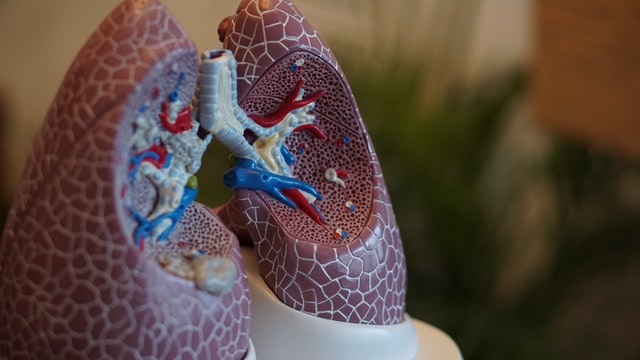Discover the different types of shock in this comprehensive guide. From hypovolemic shock to cardiogenic shock and beyond, explore the symptoms, causes, and treatment options for each type. Gain a deeper understanding of different types of shock and learn how to recognize and respond to these medical emergencies.
What Is Shock?
Shock is a life-threatening condition caused by a lack of blood flow in the body. When there isn’t enough blood flow, cells and organs don’t obtain enough oxygen or nutrients to operate correctly. As a result, several organs may be harmed. Shock needs immediate medical attention and might quickly deteriorate. One in every five persons who experience shock will die as a result of it. The body may experience FIVE different forms of shock as well as different types of shock nursing.
What Is The Common Symptom Of Shock?
Low blood pressure is the most prevalent sign of all shocks, at least eventually.2 As untreated shock worsens, blood pressure drops. Eventually, the blood pressure drops too low to sustain life (a condition known as hemodynamic instability), and shock kills. It might take a long time or it can be extremely rapid depending on the cause.
While low blood pressure is the only symptom at the conclusion of every shock category, certain shock categories are far more prevalent than others. As a result, their symptoms are more prevalent. Here are the shock categories, in order of frequency, along with their common symptoms.
4 Different Types Of Shock And Their Symptoms
Here are 4 different types of shock and their symptoms. Each type of shock will require different types of shock nursing.
The treatment differs depending on the type or the cause of shock. Fluid resuscitation in general (giving a number of fluids to raise blood pressure quickly) with IV in the ambulance or emergency room is the first-line treatment for all types of shock. The doctor will also administer medications such as epinephrine, norepinephrine, or dopamine into the fluid to try to raise the patient’s blood pressure to ensure blood flow to vital organs.

There are 5 different types of shock: anaphylactic, cardiogenic, hypovolemic, neurogenic, septic. Let’s look deeply at each type and the shock symptoms!
Hypovolemic Shock
The most frequent kind of shock is one in which there is insufficient fluid or blood volume (hypovolemia). It can be caused by bleeding (also known as hemorrhagic shock) or by various types of fluid loss and dehydration. These symptoms appear when the body strives to compensate for the loss of blood or fluid and maintain blood pressure:2
- Rapid pulse (rapid heart rate)
- Breathing quickly
- pupils that are dilated
- Skin that is pale and chilly
- Sweating (also known as diaphoresis)
The patient becomes sluggish, disoriented, and finally unconscious as the hypovolemic shock worsens. There will be blood if the cause is external bleeding. If the cause is bleeding into the stomach tract, the patient may vomit blood or have bloody diarrhea. Consider this if the weather is hot or the patient has been exerting herself.
Distributive Shock
This is the most difficult type of shock to comprehend, although it is quite prevalent. When arteries in the body become floppy and can no longer contract effectively, blood pressure becomes difficult to manage, and falls. Severe allergies (anaphylaxis) and severe infections (sepsis) are the two most prevalent causes of this type of shock. The symptoms differ depending on the reason.
Among the signs of anaphylaxis are:
- Hives
- Itching
- Swelling, especially in the face
- Having difficulty breathing
- Skin rashes
- High heart rate
Among the signs of sepsis are:
- (Not always) fever
- Red flushed skin
- The mouth is parched.
- Poor skin elasticity (turgor), which implies that if you pinch the skin, it remains pinched and rebounds slowly, if at all, to normal.
Sepsis frequently combines distributive and hypovolemic shock, because these patients are frequently dehydrated,
Despite being an uncommon cause of distributive shock, neurogenic shock (from a ruptured spinal cord and sometimes referred to as spinal shock) has a highly distinctive pattern of symptoms:
- In contrast to other types of shock, low blood pressure is a warning indicator.
- Heart rate that is typically normal (but it may be raised in some shocks)
- Where the skin is pale above and flushed red below, there is a “line” on the body.
After some form of trauma, such as a fall or a vehicle accident, neurogenic shock develops.
Cardiogenic Shock
Cardiogenic shock occurs when the heart is unable to efficiently pump blood. It can happen following a myocardial infarction (heart attack), heart valve dysfunction, cardiac arrhythmias, heart infections, and heart trauma.
Cardiogenic shock symptoms include:
- Weak and frequently erratic pulse
- Occasionally an extremely slow pulse
- Having trouble breathing
- White or occasionally pink frothy sputum produced by the cough
- Swelling of the ankles and feet
The telltale signs and symptoms of a heart attack can coexist with cardiogenic shock.
Obstructive Shock
Obstructive shock results from anything pressing on the blood arteries inside the body, making it likely the least frequent major category of shock (neurogenic being the least frequent particular form). Obstructive shock is most frequently caused by a tension pneumothorax (collapsed lung).2
- Unlike neurogenic shock, low blood pressure can occur suddenly, but the body will attempt to make up for it.
- Fast heartbeat
- Uneven breath sounds (if a pneumothorax is to blame)Difficulty breathing
The second most frequent cause of obstructive shock, aside from tension pneumothorax, is cardiac tamponade. This uncommon disease is brought on by blood that becomes trapped in the sac that surrounds the heart, pushing on it and impairing its ability to effectively pump blood.
How Is Shock Diagnosed?
Doctors and emergency personnel frequently identify shock by its outward manifestations. They might also look for:
- Reduced blood pressure
- Weak pulse
- Quick heartbeat
Their top objective after diagnosing shock is to administer life-saving care to hasten blood circulation throughout the body. Giving fluids, medications, blood products, and supportive care can accomplish this. If they can’t identify and address the reason, it won’t go away.
Your doctor can attempt to identify the source of shock after you’re stabilized. They may accomplish this by requesting one or more tests, such as imaging or bloodwork.
Imaging tests
To check for injuries or damage to your interior tissues and organs, your doctor could prescribe imaging tests, such as:
- Broken bones
- Organs are torn.
- Rips in a muscle
- Tendon abnormal growths
These tests consist of:
- CT scan
- Ultrasound
- X-ray
- CT scan
Blood tests
Blood tests may be used by your doctor to search for indicators of:
- Substantial loss of blood
- Blood infection
- Drug or medicine overdose
How To Treat Shock?
Shock can cause unconsciousness, breathing problems, and even cardiac arrest:
If you suspect you could be in shock, get medical help immediately once.
When another person shows signs of shock, call 911 and provide CPR until help comes.
First aid treatment
Make a 911 call if you believe someone has experienced a shock. then take these actions:
- Make sure they have a heartbeat and are still breathing if they are unconscious.
- Start CPR if you can’t feel a heartbeat or breathing.
Whether they are breathing:
- Then, place them on their backs.
- Raise their feet off the ground by at least 12 inches. The shock position, which helps send blood to their important organs where it is most required, is in this posture.
- To keep them warm, cover them with a blanket or additional clothing.
- Regularly check for changes in their respiration and heart rate.
- Avoid moving the person if you think they may have suffered a head, neck, or back injury.
Hopefully, this article will help you have a basic knowledge of shock as well as the necessary skills that a nurse needs to cultivate in her learning process. If you want to practice the TEAS test, visit our homepage to take the free and full TEAS practice test pack with more than 500 questions for all TEAS subtests.
Read more >> 7 Rights of Medications and Their Administration Checklists
FAQs
Final Words
In conclusion, understanding the different types of shock is crucial for healthcare professionals and anyone seeking knowledge about medical emergencies. By familiarizing oneself with the various types, including hypovolemic shock, cardiogenic shock, septic shock, and anaphylactic shock, individuals can recognize the signs and symptoms associated with each condition and respond appropriately. Prompt identification and early intervention are vital in managing shock effectively and saving lives. It is essential to consult medical professionals or emergency services in cases of suspected shock for proper diagnosis and treatment. By raising awareness about the different types of shock, this guide aims to empower individuals to take prompt action and provide potentially life-saving care in emergency situations.




